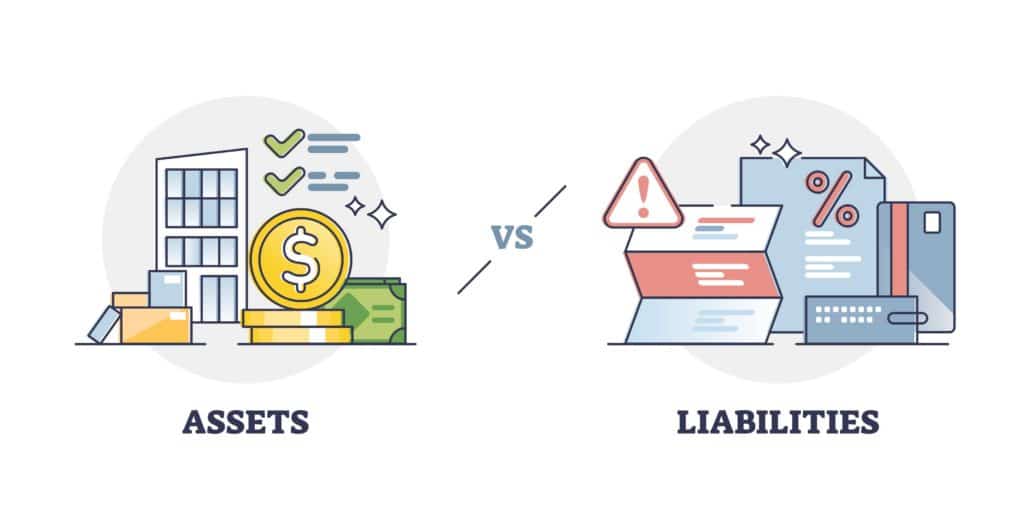When it comes to owning or investing in real estate, whether residential or commercial, there’s a lot to learn. Commercial properties can be great investments, but since you’re not living on the property, it’s an asset more than anything.
Learning about net asset value (NAV) can help you better understand investing in commercial real estate. Knowing the net asset value is the best way to see a property’s actual value and determine what you’re going to do with it if you are eventually going to sell it. However, aside from NAV, there are also other methods of valuation that work in the commercial real estate sector.
We’re here to help you learn everything there is to know about NAV and how you can make wise investment decisions.
What Is NAV in Commercial Real Estate?
So, what does NAV mean? Net asset value is the total value of an asset after you subtract any debt and the costs of other fixed capital expenses. NAV expenses are what drive the current and future real estate investor returns.
One thing that sets real estate apart from other industries is that NAV in real estate is more precise. For the most part, an increase in the NAV of the commercial real estate property means an increase in cash that goes to the investors. When looking at NAV also shows an investment firm’s ability to generate value and performance for its investors.
When they calculate NAV, real estate investors can see the property’s liabilities. This is essentially the markings of the market shares on a per-share basis. Market shares change daily, so being able to see the value of the shares on a per-share basis is essential.
How Do You Determine NAV?

It takes some calculations to determine the NAV method of valuation for a commercial real estate property. The good news is that it’s relatively easy to decide on the NAV of a commercial property. Before calculating the net asset value, you’ll need to know the market value at the time of purchase, any debt, and fixed expenses.
The debt and fixed expenses of commercial real estate are liabilities when it comes to calculating NAV in real estate. It’s easier to understand how we determine NAV if we use an example with actual values.
Let’s say you purchase a commercial real estate property for $100 million. At the time of your purchase, the market value is $100 million. If there’s a debt of $50 million with fixed capital expenses of $10 million.
All you have to do is subtract the debt and fixed capital expenses from the value at acquisition. So, the NAV of this $100 million commercial real estate would be $40 million.
Something important to note about the NAV method of valuation is that the value can change over the years and even over the quarters in a year. Improving operations and reducing operating expenses will help you increase the net asset value; on the opposite side, it can reduce the net asset value.
Looking at our previous example, let’s look at how the NAV can change over time. Let’s say a few years later, the fixed expenses went up to $15 million, and the debt went down to $25 million. The new NAV of the commercial real estate property would be $60 million.
Remember, no matter how your debt or fixed expenses change throughout the years, your market value at acquisition will always remain the same.
How Often Should You Calculate NAV?
How often you should calculate the net asset value varies. If it’s in a mutual fund or unit investment trust, you should generally calculate it every day. Most investors or brokers will wait until the market closes for the day, meaning when the New York Stock Exchange closes on a business day.
Stocks change prices all the time, and the same idea applies to shares of a commercial real estate property in a real estate investment trust (REIT). Calculating the NAV every day will show real-time updates of the share price of a property for those who want to invest in them or purchase shares.
How Do Investors Use NAV?
Real estate investors use NAV constantly. The final NAV real estate calculation is vital to real estate investors because it can help them determine how much a share of the fund should be worth to other investors.
While the actual market value of the property might be a little different from the NAV, it can at least help them have a better idea of the buying and selling opportunity.
Investors use the net asset value as a tool to help them understand the value of their funds better. Understanding the NAV can help them value the fund shares easier and improve transaction processes. The NAV method of valuation never changes, but the valuation can, which is why it’s so crucial for investors to use this value when making decisions.
Investors can look at the property’s market value and think it’s a significant investment, but when you factor in any debt and fixed expenses, the property might not be as great of an investment as it once thought. That’s why they need to use the NAV in real estate investment decisions.
Investors will look for commercial real estate with a higher NAV because it means more profits for them and higher shares. They may choose ones with a lower initial NAV but may increase their NAV over time due to debt reduction and fixed income reduction. Investors will use NAV to make decisions on open-end or closed-end funds.
Open-End Fund NAV
Property in an open-end fund will have unlimited shares. They create new shares to sell, and then when those are redeemed, they are entirely taken out of circulation. If they sell too many of the shares, it might have to come out of the investment.
Closed-End Fund NAV
Something interesting about these types of shares is that people can sell the shares at a different price than the net asset value. The prices change more frequently than those in an open-end fund and will vary based on the changing value of assets. These shares are easy to buy and sell during regular market hours, which is a huge benefit.
How Does Net Operating Income (NOI) Impact NAV
Net operating income (NOI) is the total amount of revenue of a property before you subtract the operating expenses. For commercial real estate, the NOI can change over time depending on shifts in the market with supply and demand.
The shifts can come from different factors like new properties popping up, employment opportunities near the property, etc. These significantly impact the NOI of real estate.
Now, even though these factors will always impact NOI in the short term, it doesn’t always change the net asset value. NOI will only affect the NAV if the property’s income sustains.
Let’s look at an example to help you better understand how NOI impacts NAV. For this, let’s consider a real estate property in a “good” area of town with constant business. Maybe there’s construction going on nearby that will negatively affect the income for the commercial real estate in the short term, but not once the building is complete.
In this case, while the NOI might go up during this time which can negatively impact the NAV, the commercial real estate in a city’s “good” communities will remain high for reasons like people moving to the area and spending their time at specific businesses.
Frequently Asked Questions
With so much to learn about investing in real estate and the net asset value, here’s what other curious investors are wondering on the topic of net asset value.
What Is the Difference Between NAV vs. Market Price?
There’s only a slight difference between NAV vs. market price. The difference between NAV vs. market price is simple. The NAV is the total value of the asset once you calculate other expenses and debt, while the market price is the price it currently sits at in the real estate market.
Are NAV and NTA the Same Thing?
No, net asset value and net tangible assets aren’t the same things. We’ve already covered what a NAV is, but an NTA is the book value of properties in an REIT.
How Often Is the NAV of a Commercial Real Estate Property Calculated?
Firms will always calculate the net asset value of a property at the end of the market day. Some investment firms will calculate it quarterly, but calculations happen at the end of the market days for record-keeping and to see how trends change over time.
Make Wiser Investment Choices in Commercial Real Estate Today

The NAV in real estate is the total value of a commercial real estate property after you subtract any debt and fixed expenses that you have. It’s the best way to know the actual value of a property and your asset.
With commercial real estate, the NAV can vary depending on the date of acquisition and if you have any changes in your debt or fixed expenses. Regardless, knowing how to calculate the net asset value can help you understand if you’re making a wise investment in commercial real estate.
Contact EXtrance today to learn how we can help improve your commercial real estate investments with our user-friendly platform.

